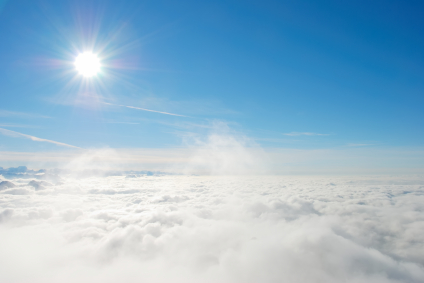Making the most of the sun?
Posted on: June 28th, 2011

Making the most of the Sun?
Deciding to go solar is a big decision for any household. No matter how committed you are to going green spending over £11,000 doing so takes more than a little soul (and wallet) searching – particularly in these uncertain times.
For our family the decision to go solar was unexpectedly made a little easier – having had much of the roof of our house destroyed in an electrical fire in February of last year.
But by midsummer the house was covered in scaffold and under a ‘tin hat’, which offered us the opportunity to stand and stare ‘eye to eye’ with our roof, pondering those long desired PV panels.
Yet not having a finite budget necessitated something of a reality check. And this is where the Feed In Tariff (FIT) helped us out. At 41.3p (plus uplift for export)* per unit or ‘kWh’, the payment received for generating electricity can tip the balance. And so, by the shortest day of the year, tin hat off, our panels were up and… covered in snow!
Yet by their six month anniversary at the end of May, the dial on our PV inverter – the kit that makes it all work – transforming solar rays into useable ‘AC’ energy – showed a whopping 612 KWh units. We had started generating our own electricity!
The exact financial benefits of this investment are almost undecipherable, thanks to electricity provider’s uber-complex tariff systems, which make analysing investment returns look like child’s play.
As a rough estimate, after six months our situation is as follows:
- Cost of installation £11,000
- Generated 612 kWh – for which we have received cash of £265.
- Savings on our electricity bill for the 612 units generated (and therefore did not have to buy) – just over £70.
- Total cash benefit in the first 6 months = c£335
In rough terms, if we double this for the year, this amounts to a return of a little over 6% – an indication that the pre installation estimate of up to 8% may be about right – weather permitting!
Calculations and predictions aside thought, like it or not energy costs are only realy likely to go up, the cost of fitting PV solar is only likely to go down and carbon emissions will remain a problem. So unless something changes dramatically to alter this equation, taking steps to reduce carbon footprints will increasingly make sense.
So on top of the feel good factor of working towards decarbonising our home there are long term financial benefits as well.
What better thoughts could an IFA throw in to discussions with potential green or ethical investment clients?
Well, there is one. While you are on the topic – don’t forget to mention the rather more quiet and retiring – and perhaps somewhat unexciting greener home ‘must have’ – home insulation – for lofts or cavity walls.
Insulation is neither cool, sexy nor particularly topical given the current weather – but it does seem to be a great place to start for those wishing to dip their toes in the ‘green savings’ market – which after all sits so well alongside ‘green investment’!
Costs have plummeted thanks to government support – and again, from experience – this can now cost in the region of £100+… a rather easier decision than setting aside £10,000+ for PV solar – and of course it meets the same environmental and financial aims.
For more information about energy saving options see the Energy Saving Trust website: www.energysavingtrust.org.uk.
…And fingers crossed for plenty of sun please!
* Tariffs apply to domestic PV installations carried out by MCS approved installers only. They are on a reducing scale set for the year in which installation takes place. Once installed the tariff is set for 25 years, is index linked and is tax free. South facing, shade free roofs are best – ours is west facing! See Energy Savings Trust for further information.
Julia, 28 June 2011